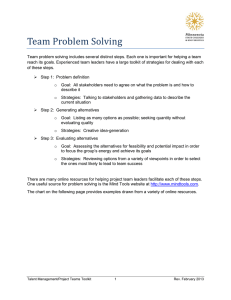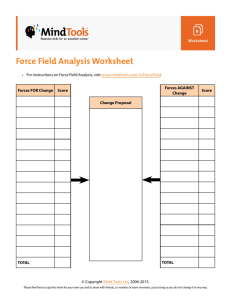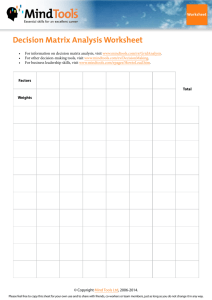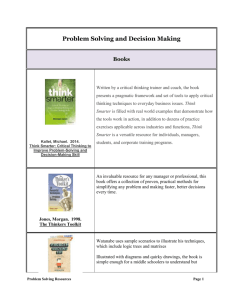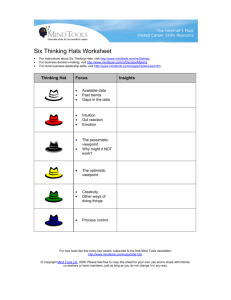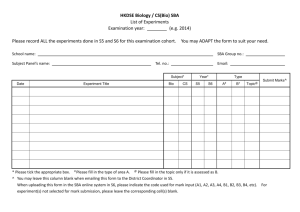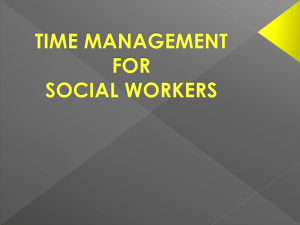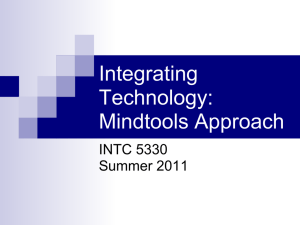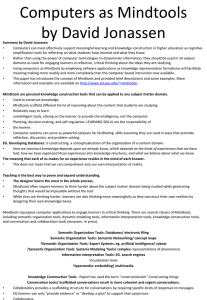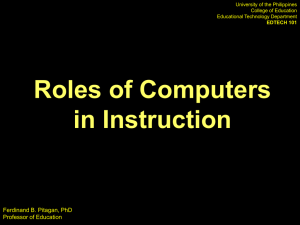Template to create a scientific poster
advertisement
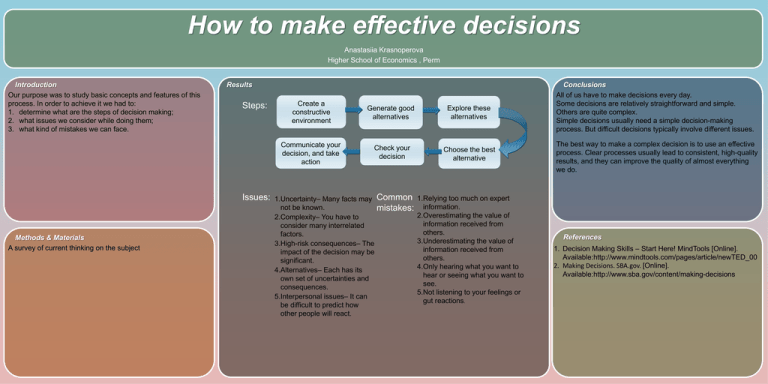
How to make effective decisions Anastasiia Krasnoperova Higher School of Economics , Perm Introduction Our purpose was to study basic concepts and features of this process. In order to achieve it we had to: 1. determine what are the steps of decision making; 2. what issues we consider while doing them; 3. what kind of mistakes we can face. Results Steps: Create a constructive environment Communicate your decision, and take action Generate good alternatives Check your decision Explore these alternatives Choose the best alternative Conclusions All of us have to make decisions every day. Some decisions are relatively straightforward and simple. Others are quite complex. Simple decisions usually need a simple decision-making process. But difficult decisions typically involve different issues. The best way to make a complex decision is to use an effective process. Clear processes usually lead to consistent, high-quality results, and they can improve the quality of almost everything we do. Issues: 1.Uncertainty– Many facts may Common 1.Relying too much on expert not be known. mistakes: information. Methods & Materials A survey of current thinking on the subject 2.Complexity– You have to consider many interrelated factors. 3.High-risk consequences– The impact of the decision may be significant. 4.Alternatives– Each has its own set of uncertainties and consequences. 5.Interpersonal issues– It can be difficult to predict how other people will react. 2.Overestimating the value of information received from others. 3.Underestimating the value of information received from others. 4.Only hearing what you want to hear or seeing what you want to see. 5.Not listening to your feelings or gut reactions. References 1. Decision Making Skills – Start Here! MindTools [Online]. Available:http://www.mindtools.com/pages/article/newTED_00 2. Making Decisions. SBA.gov. [Online]. Available:http://www.sba.gov/content/making-decisions
